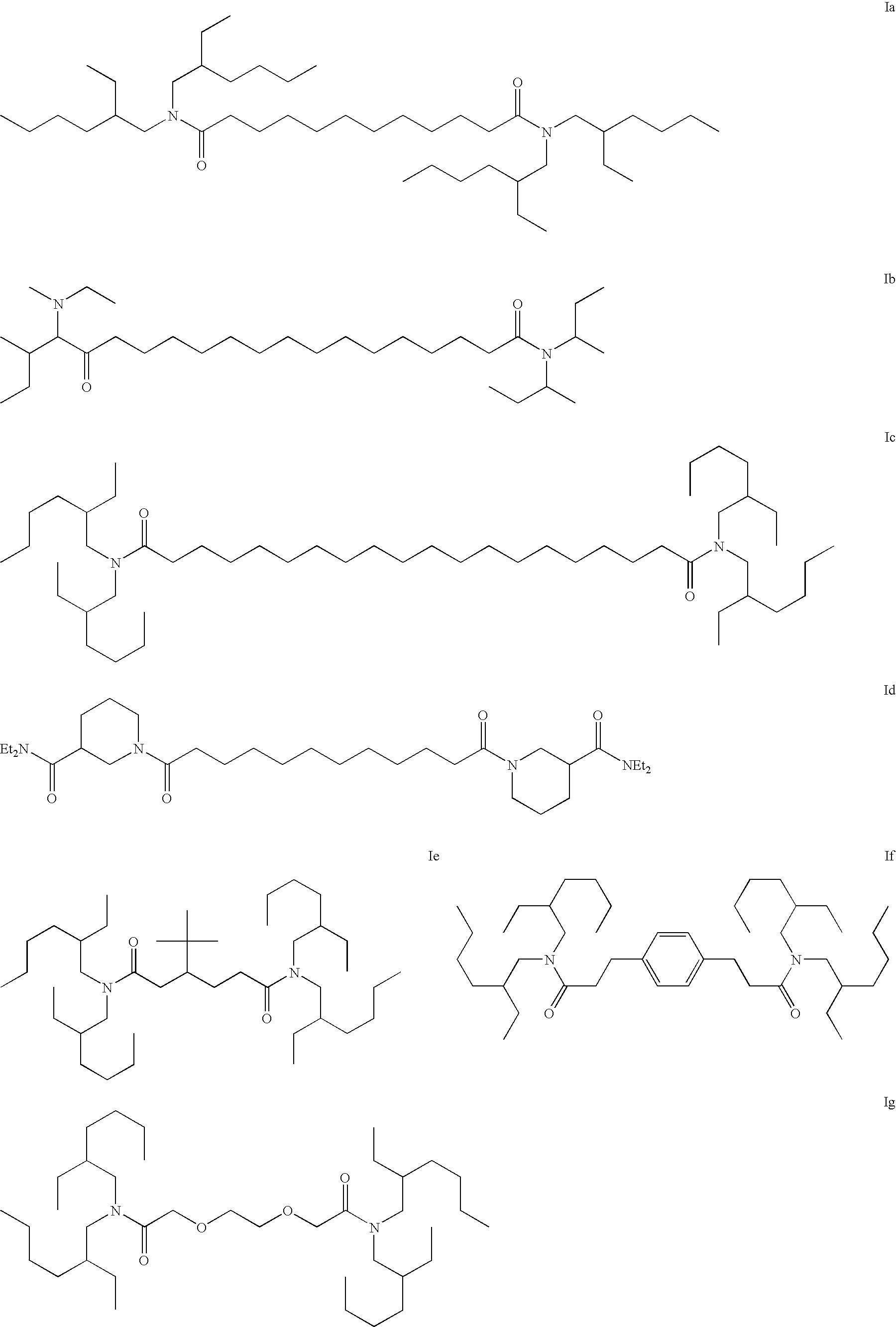Stabilized silver halide photographic element
a technology of silver halide and photographic elements, applied in multicolor photographic processing, photosensitive materials, instruments, etc., can solve the problems of deterioration of the original recorded image, inability to completely achieve dye stabilization, and small amount of dye stabilization to light fade, etc., to achieve the effect of modifying the reactivity of the coupler
- Summary
- Abstract
- Description
- Claims
- Application Information
AI Technical Summary
Benefits of technology
Problems solved by technology
Method used
Image
Examples
synthesis examples
[0068] Iu: Triethylamine (7.95 g; 78.5 mmol) and di-sec-butylamine (9.9 g; 76.7 mmol) were dissolved in THF (300 mL) and cooled in an ice bath. Dodecanedioyl dichloride (10 g; 37.4 mmol) dissolved in THF (100 mL) was added drop wise and the heterogeneous mixture was allowed to warm to room temperature and stir over night. The white salts were removed by filtration and the salts washed with THF. Most of the THF was removed from the filtrate under vacuum and the resulting solution was poured into 1.8 L of dilute HCl / ice water. The solution was extracted with dichloromethane (2×'s) and the combined organic layers were dried (Na2SO4). Solvent removal under vacuum afforded 16.9 g of a pale yellow oil. Chromatography on silica gel with 96:4; dichloromethane:acetone afforded 10.5 g (62%) of the desired material (Iu) as a very pale yellow oil. MS, m / e=453 (P+1) in ES+ mode.
[0069] Inn: Triethylamine (39.8 g; 393 mmol) and 4-benzylpiperidine (67.24 g; 384 mmol) were dissolved in THF (1 L) an...
example 1
Comparison
[0070] In this example (check), coupler of structure YC2 is employed. Also, in addition to coupler solvent tributyl citrate (TBC), stabilizers P1, P13 and S1 are employed:
P1P13S1TBC
[0071] Coupler dispersions were prepared in accordance with conventional techniques by dissolving coupler YC2 in an equal weight of TBC with heating. Stabilizers P1, P13, and S1 were added to the yellow coupler oil phase (to provide indicated coated coverage), and the oil phase was dispersed in an aqueous phase containing gelatin and surfactant Alkanol-XC by homogenizing the mixture in a colloid mill. Each of the coupler dispersions was mixed with a blue-sensitive cubic silver chloride photographic emulsion for coating on a resin-coated paper support, pre-coated with an unhardened gel pad. The coating structure is shown below.
[0072] Coating Structure
GEL SUPERCOATGelatin1.4 g · m−2Hardener*0.15 g · m−2Coating SurfactantsPHOTOSENSITIVE LAYERGelatin2.15 g · m−2Coupler5.93 × 10−4 mol / m2Coupler...
example 2
[0074] The following coating structure denotes an example of the coating structures for many of the experiments with the new compounds of this patent. In this coating, coupler of structure YC-2 is also employed. In addition to compound of Formula Ii, stabilizers P2 and EA1 are employed. Coupler dispersions were prepared in accordance with conventional techniques by dissolving coupler YC2 in an equal weight of solvent Ii in accordance with the invention with heating. Stabilizers P2 and EA1 were added to the yellow coupler oil phase (to provide indicated coated coverages), and the oil phase was dispersed in an aqueous phase containing gelatin and surfactant Alkanol-XC by homogenizing the mixture in a colloid mill. Each of the coupler dispersions was mixed with a blue-sensitive cubic silver chloride photographic emulsion for coating on a resin-coated paper support, pre-coated with an unhardened gel pad. The coating structure is shown below.
[0075] Coating Structure
GEL SUPERCOATGelati...
PUM
| Property | Measurement | Unit |
|---|---|---|
| weight ratio | aaaaa | aaaaa |
| boiling point | aaaaa | aaaaa |
| thickness | aaaaa | aaaaa |
Abstract
Description
Claims
Application Information
 Login to View More
Login to View More - R&D
- Intellectual Property
- Life Sciences
- Materials
- Tech Scout
- Unparalleled Data Quality
- Higher Quality Content
- 60% Fewer Hallucinations
Browse by: Latest US Patents, China's latest patents, Technical Efficacy Thesaurus, Application Domain, Technology Topic, Popular Technical Reports.
© 2025 PatSnap. All rights reserved.Legal|Privacy policy|Modern Slavery Act Transparency Statement|Sitemap|About US| Contact US: help@patsnap.com



